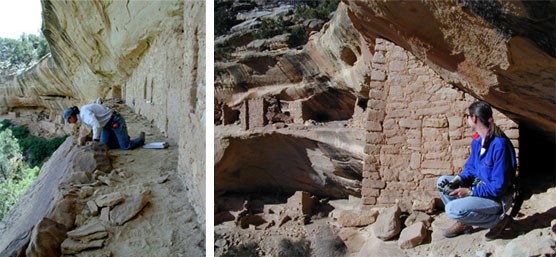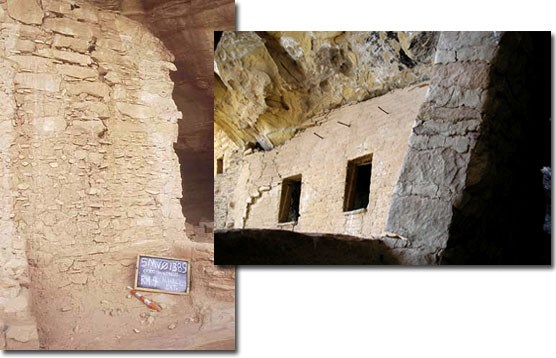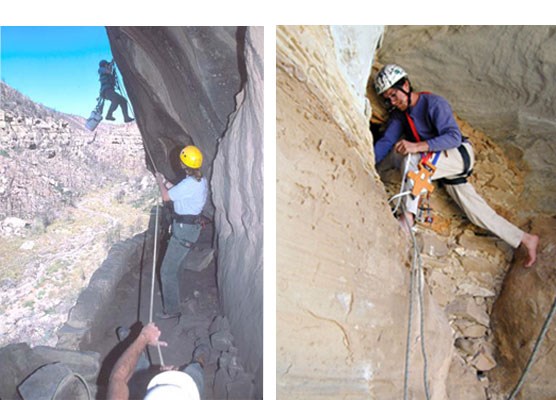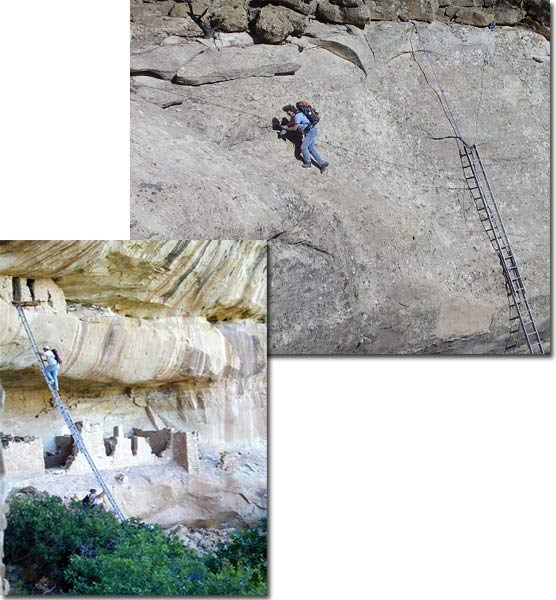|
The Condition Assessment Project at Mesa Verde National Park began in 1996. To date, 230 of the recorded 600 cliff dwellings have been assessed. Under this program, standing walls in the alcoves are assessed for damage from such effects as water, fire, structural instability, and rodents. Recommendations are then made that will help reduce or reverse those adverse effects. 
NPS Photo
Types of Threats to Standing Architecture If these types of problems are found, then recommendations are made for additional documentation and/or stabilization treatments which will help to preserve the archeological integrity of the sites. Often the most severe water runoff problems can be reduced by installing a bead of silicone caulk along the cliff face which directs water away from archeological features. 
NPS Photo 
NPS Photo
Background 
NPS PHOTO |
Last updated: February 24, 2015
